PLASTICS & THE ENVIRONMENT
FACT OVER FICTION
THE MOST INDEPENDENT & COMPREHENSIVE INVESTIGATION
Plastics & the Environment – get the facts from the #1 independent expert – microplastics, litter, waste, ocean plastics, degradation, LCA
Introduction
We have been bombarded with stories about how bad plastics are for the environment. The problem is that these stories do not come from professional scientists. Instead, they come from other, less credible sources.
I am a professional scientist who just spent thousands of hours unpaid to read over 4000 peer-reviewed articles on materials use, waste, litter, microplastics, ocean plastics, degradation and more. That is the most comprehensive independent review to date and this page distills down the essential information, so that you can have the facts in just a few minutes.
If you want to know a little more, then there is a 20 minute video that will astound you. And for those of you who are really passionate, The Plastics Paradox book is available for free in several languages at the bottom of this page.
How concerned should we be about plastics? The only way to be sure is to look at the evidence…

How Much Plastic Do We Use?
One reason people criticize plastics is because of the perception that we use too much in the way of materials and we need to cut back. It is true that we are a wasteful society and that we should reduce our use of materials. How much does plastic contribute to our use of materials? The answer may surprise you…
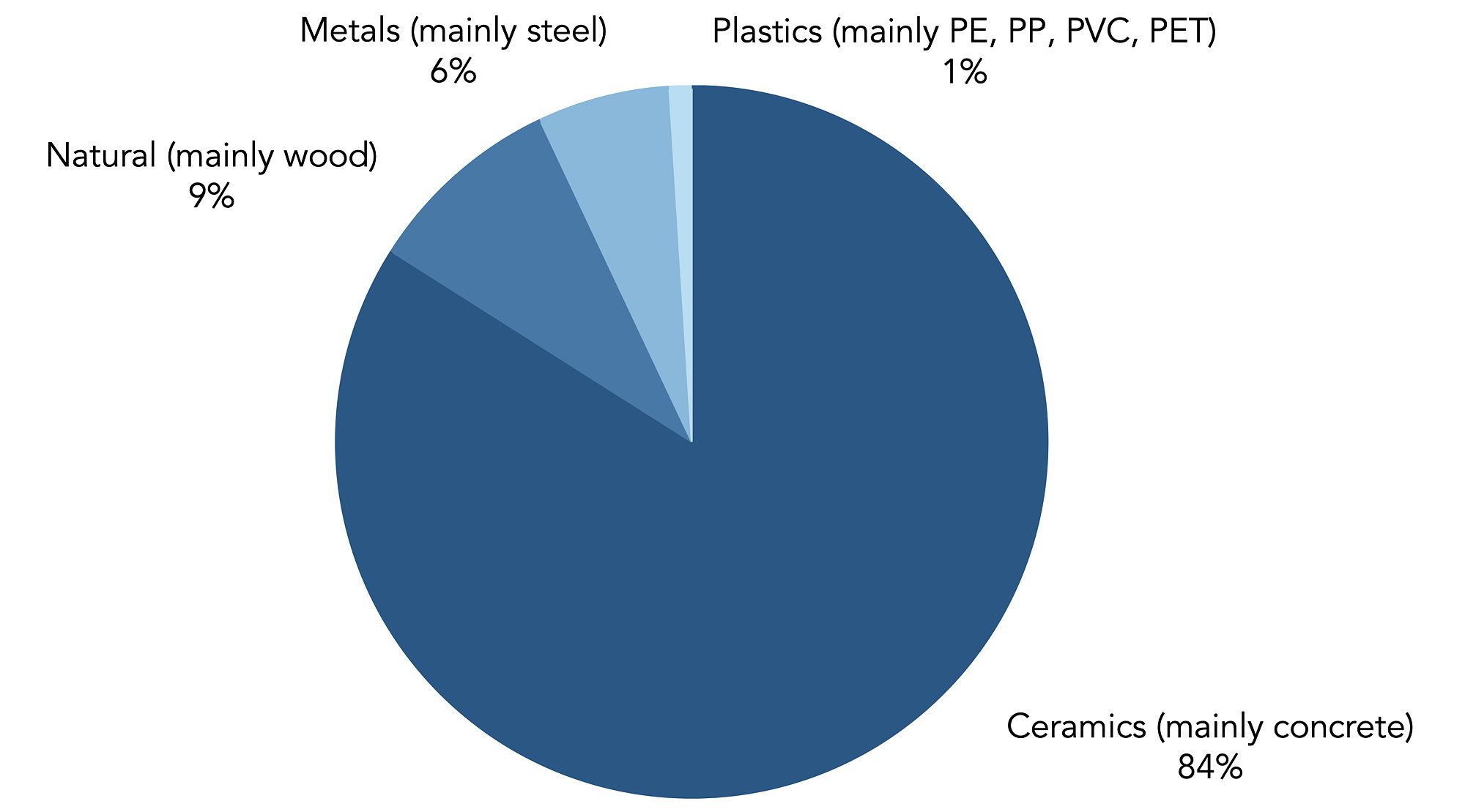
Are you shocked? I know that I was. In fact, although I found that data in a well-respected book, I struggled to believe it. So, I checked it against several other sources and found that the best estimate for global plastics consumption is 0.4% by weight and under 1% by volume. Just ask Siri or Google these two questions:
“Hey Siri – what’s the global consumption of materials?”
and
“Hey Siri – what’s the global consumption of plastics?”
You will see for yourself that the numbers are right – plastics are under 1% of the materials we use. Why did no-one check this before? Maybe they didn’t want us to know the truth. Ignoring 99% of a problem and obsessing over 1% of it is a sure path to failure. As a scientist, I get my information from peer-reviewed studies, not Siri. I just mention Siri to show you how easy it is to check what I have claimed.
Is the Growth of Plastics Exponential?
We often hear that plastics growth is out of control and that it must be stopped. Is it fair to criticize plastics in particular for their rapid growth? The data on materials growth rate shows that all materials are now expected to grow at about the same rate. Metal, wood, concrete, paper and plastics are all projected to grow at ~3-4% per year. All of them are increasing as we become more prosperous and as the population grows. So, while it is fair to say that we should reduce our use of materials, but it is not justified to single out the growth rate of plastics.
Consumption growth rate of selected materials worldwide from 2018 to 2050, Statista
Would We Save Material if We Eliminated Plastic?
Even though plastics are under 1% of materials we use, surely it would be a good idea to reduce that number. That sounds like common sense but studies have shown that replacing plastic requires 3-4 times more material, so the net effect of replacing plastics is to massively increase our overall materials use rate. You can check this at home in your kitchen. It’s a fun experiment to do with your kids.
Bags: plastic 6 grams paper 60g
Straws: plastic 1g paper 2g metal 11g glass 22g
Bottles: plastic 30g aluminium 90g glass 325g
How Much Waste Does Plastic Create?
Another reason for the attacks on plastics is the perception that plastics generate a lot of waste. It is true that humanity creates a lot of waste. In fact, the more prosperous we become, the more waste we generate. We should try to reduce our waste but how much do plastics contribute to waste?
We just heard that plastics are under 1% of materials we use, so perhaps it will come as no surprise to hear that plastics also represent under 1% of all waste we create. Accurate data on waste are hard to come by, but that is the best estimate I could make. That means that if all plastic waste were eliminated tomorrow, we would still have 99% of our waste left to deal with.
As shown above, replacing plastics means using 3-4x more material which generates 3-4 times more waste as well. So, while reducing our materials use is wise and helpful, replacing plastic is usually detrimental to the environment. These facts are well known, so why are groups telling us to take actions proven to increase harm?
A detailed substitution analysis for many different items revealed that on average it takes 3-4lb of other materials to replace 1lb of plastic. That means that eliminating all plastic tomorrow would:
Remove just 1% of materials and waste
Significantly increase the total amount of materials and waste
This is another example where science soundly contradicts what we have been told. I was surprised as well. When I wrote The Plastics Paradox, I showed the EPA numbers which indicate that plastics make up 13% of household waste. What I didn’t know then was that household waste is just 3% of total waste – the other 97% is industrial waste from mining, factories and so on. Scientific analysis of that EPA data showed that plastics have massively reduced the total waste going to landfill over the last decades.
What is the Environmental Impact of Plastics?
Scientists have developed a tool called lifecycle analysis, or LCA for short, which is the only reliable method to work out what is green and what is not. LCA totals up all of the carbon dioxide generated, the energy used, the water used, the transportation, the pollution, waste and recycling aspects. It is a method that’s standardized and trusted by companies, governments and non-governmental environmental groups alike. What does it tell us?
There have been ~30 LCA studies on grocery bags. Every one ever done concluded that plastic polyethylene bags cause less harm than paper, cotton or degradable plastic bags. That means that banning or taxing PE bags is scientifically certain to increase harm.
There are LCA studies on straws. Of course, taking no straw is the greenest choice. But if you have to take a straw, then LCA shows that the normal plastic straw causes least harm. Plus, it can be reused many times, which lowers its impact even further.
When it comes to soft drink containers there are several LCA studies there too and they all agree that plastic containers made of HDPE or PET are the greenest recyclable choice. Steel, aluminium and glass are all far worse for the environment as they take far more energy, generate far more CO2 and also far more waste. Again, the greenest choice is to avoid soft drinks and bottled water whenever possible. Comprehensive studies find that plastics are responsible for ~2% of carbon dioxide creation and that they dramatically reduce carbon dioxide compared to alternative materials. More on that in on this dedicated page on the carbon footprint of plastics.
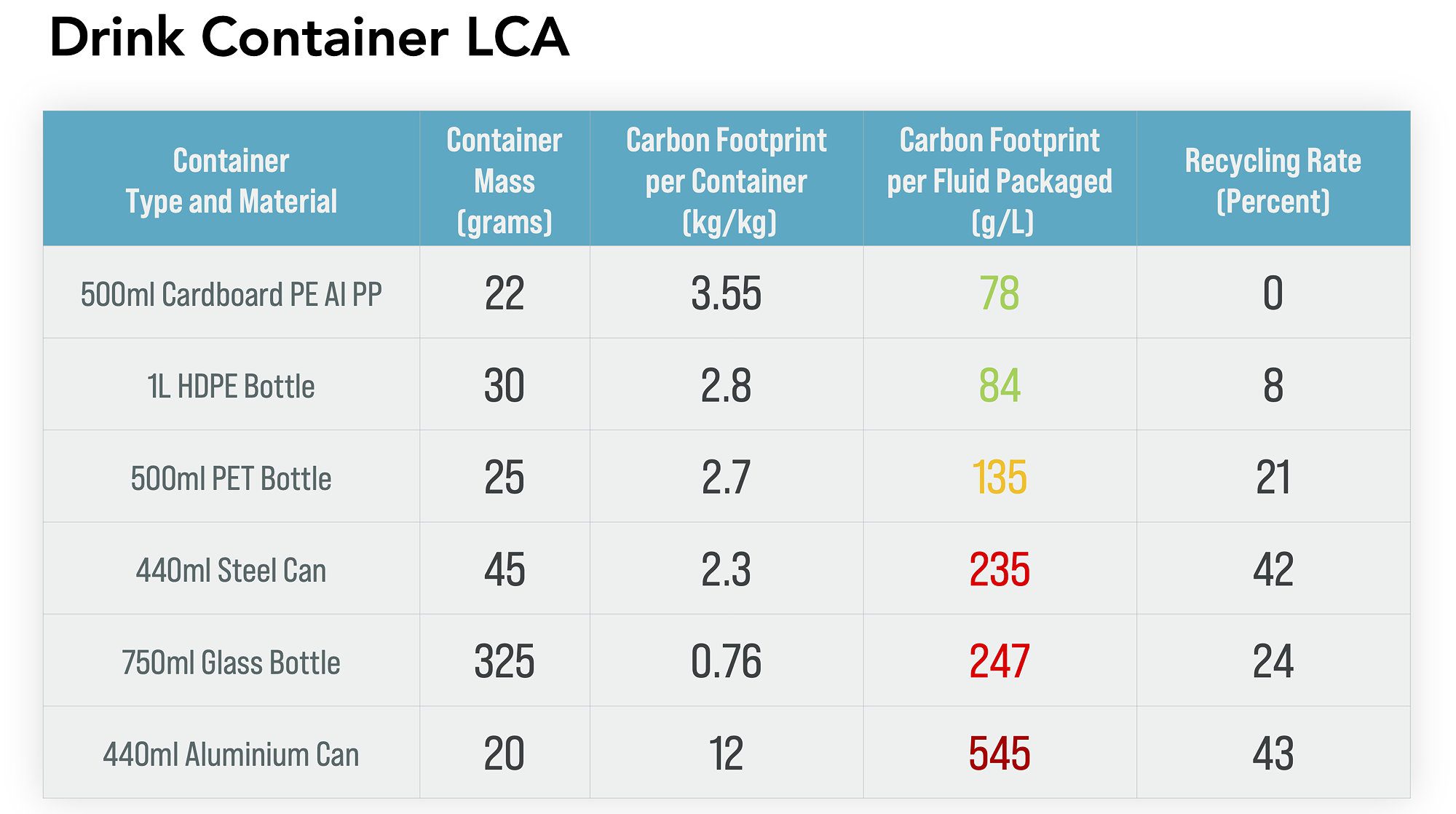
It is interesting to note that the greenest materials have a low recycling rate but the least green materials like metal and glass have the highest recycling rate. Why is that? It turns out that the less green a material is, the more expensive it is and therefore more worth recycling. So platinum, palladium and gold which are worst materials for the environment are expensive and therefore recycled more. The converse is also true, meaning that the greenest materials are so cheap that they are not worth recycling, i.e. you cannot make a profit recycling them. That is the real reason why the present recycling rate for plastics is so low. A dedicated page about the facts and myths around plastics recycling can be found here.
Perhaps containers are an exception and I have cherry-picked an example that makes plastics look greener than other materials. As a professional scientist, that is not how I work. I downloaded over 50 life cycle analyses covering a wide range of topics and the results were consistent. Plastic is almost always the proven greenest choice with lower impact in the majority of factors (carbon dioxide, waste, energy used, fossil fuel use, acidification and so on). The only material that is consistently less harmful than plastic is a piece of wood (think wine corks and decking). As we know, most of the more important products we use are not feasible in wood. See this recent review that found plastics like PE, PP, PET and EPS to be the least harmful choice in almost every case.

Indeed, a recent peer-reviewed study found that the public have no clue what is really green. They demand products that are proven to increase harm, based on e.g. paper, metal and glass and companies greenwash to give them the products that they asked for.
“Interestingly, consumer perceptions have been found to be inaccurate, and inconsistent with LCA results. Research shows that consumers are susceptible to making ineffective environmental choices because they rely on misleading, inaccurate, or naïve beliefs to judge the sustainability of packaging. Manufacturers have to comply with regulations and will respond to consumer demands, which may lead to the presence of greenwashing in the industry. While the practice of greenwashing can appease the consumer and potentially increase the market share of the greenwashed product, the practice is misleading to consumers and does not reflect the true environmental commitment of manufacturers.”
Source – Closing the Perception-Reality Gap for Sustainable Fresh Food Plastic Packaging 2024.
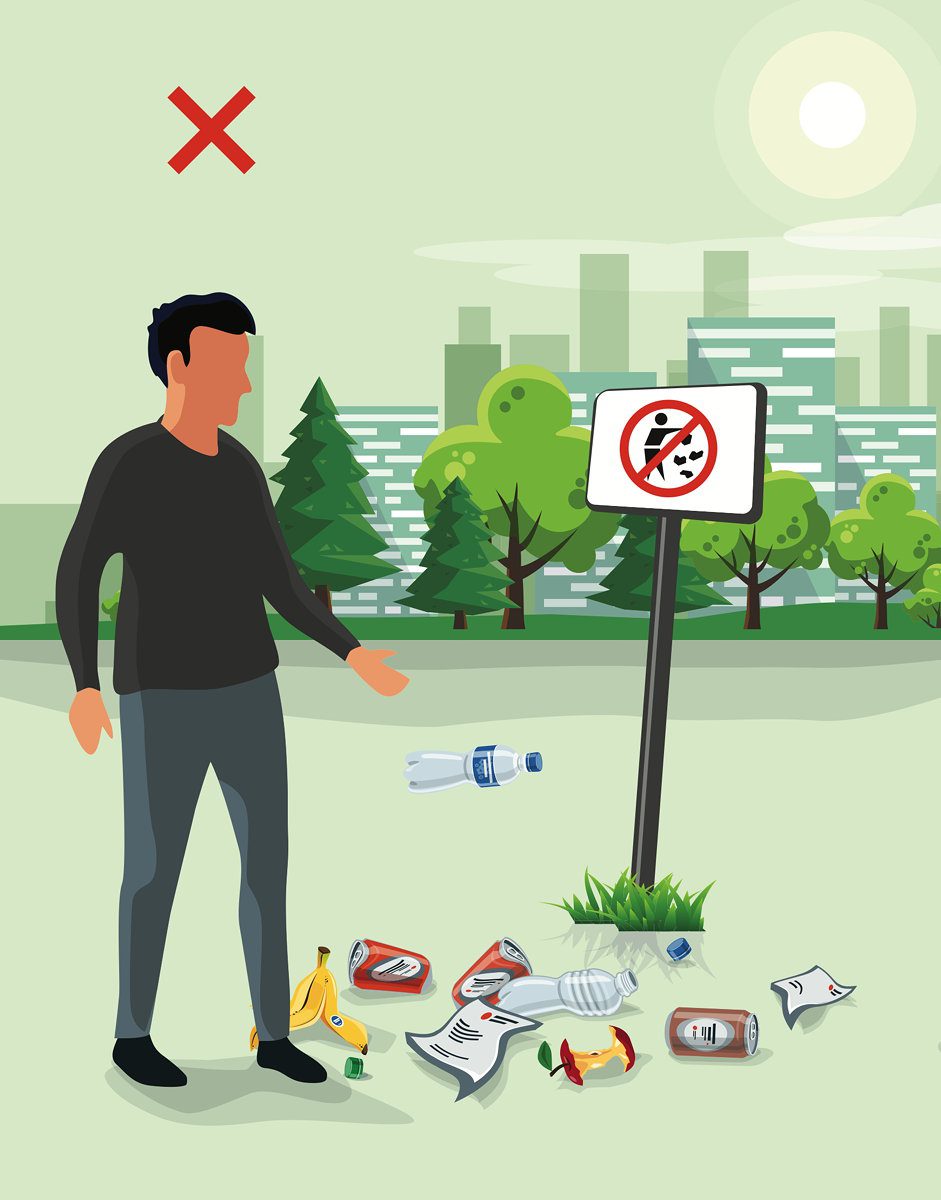
Litter
It is popular to blame plastic, products or companies for litter. We see posts blaming Coca Cola for creating litter, or blaming the material. Is that justified? Once again, huge scientific studies have been done to investigate the subject and they concluded that litter is caused by people. That means that blaming companies or materials is unjust and counterproductive because a problem can only be solved if we place the place the blame properly. Studies on litter show that effective solutions must be based around changing behaviour through education and fines.
They observed hundreds of thousands of littering events. 81% of litter was dropped intentionally, so people are definitively to blame. They looked at increasing the number of trash cans and found that it did help but only to a certain extent. Even with trash cans placed every 20 feet (8 steps apart), people still dropped litter. Read more about plastics and litter on this dedicated page.
As with the other examples above, we see that we have been distracted from the true cause of the problem and that means that our current proposed solutions like taxes, EPR or bans will fail.
How Long do Plastics Take to Degrade?
Plastics are criticized because they do not degrade. But is that true? We buy items made of plastic and we know that they degrade. I bought a trampoline with plastic trim and the plastic degraded so badly that it had actually crumbled to dust and vanished within three years outdoors. Why do we believe people who tell us that plastic don’t degrade when our own eyes tell us the opposite?
Scientists have studied plastics degradation for decades. They know that some plastics degrade so quickly they that could not even be used without additives to help slow down the process. Billions of dollars are spent every year on stabilizers additives used to protect plastics from degradation. Those billions would not be spent unless the plastics really are unstable. Once again, you can easily check this yourself with Google or Siri:
“Hey Siri – what’s the global market for plastics stabilizers?”
Plastic Stabilizer Market in-Depth Analysis, Global Trends, New Technologies, Regional Analysis, Growth Factors, and Forecast 2030
Estimates for the global market for plastics stabilizers range from two billion to eight billion dollars per year.
Why are plastics unstable? It’s because they are organic molecules held together by carbon-carbon bonds just like proteins, carbohydrates, enzymes, cellulose and even the DNA that holds the code for life. All of those are polymers with similar chemistry and they all degrade similarly.
Scientific studies show that a plastic bag disintegrates in less than a year outdoors, just like a leaf does. As a rule of thumb, a piece of plastic like polyethylene or polypropylene will degrade at about the same speed as a leaf or piece of wood of similar size.
“Films of polyolefins with low or zero content of antioxidant additives degrade severely in less than one year of exposure to natural weathering.”
Plastics are continually criticized for degrading too slowly. We are told that they last forever. As we know know, that’s clearly untrue. Is it fair to single out plastics? How long does it take for the other 99% of materials we use to degrade? Let’s take a look:
~85% ceramics – inorganic material – thousands of years
~5% metals – inorganic material – thousands of years
~10% wood – organic material – hundreds of years
We routinely find ancient objects made of metal, glass, wood, cloth, clay or paper and we celebrate the finding, put it in a museum and charge money to see it. But when it comes to plastics, we criticize them for not vanishing instantly when we drop them as litter. What a blatant double standard or plastics prejudice.
As we now know, of all the materials we use, plastics degrade faster than almost all of them. How were we ever fooled into demonizing plastics for not degrading quickly enough when the evidence shows the reverse?
In conclusion, the argument that plastics are bad because they don’t degrade is pure fiction as proven by the thousands of peer-reviewed scientific articles on plastic degradation. If you want more details and proof about plastics degradation in the environment, then see this dedicated page.
How Much Harm do Microplastics Cause?
I have heard people say that plastics are dangerous because they degrade to give smaller particles. That is a strange claim when you stop to think about it because every solid material we know of does exactly the same. Boulders become rocks, rocks become pebbles, pebbles become sand and so on. Metals crumble and rust. Leaves and branches become brittle and break into pieces. All of that is perfectly natural and not a concern. We need only be concerned if those particles turn out to be toxic. Are there studies on the toxicity of these particles, and if so, what do they say?
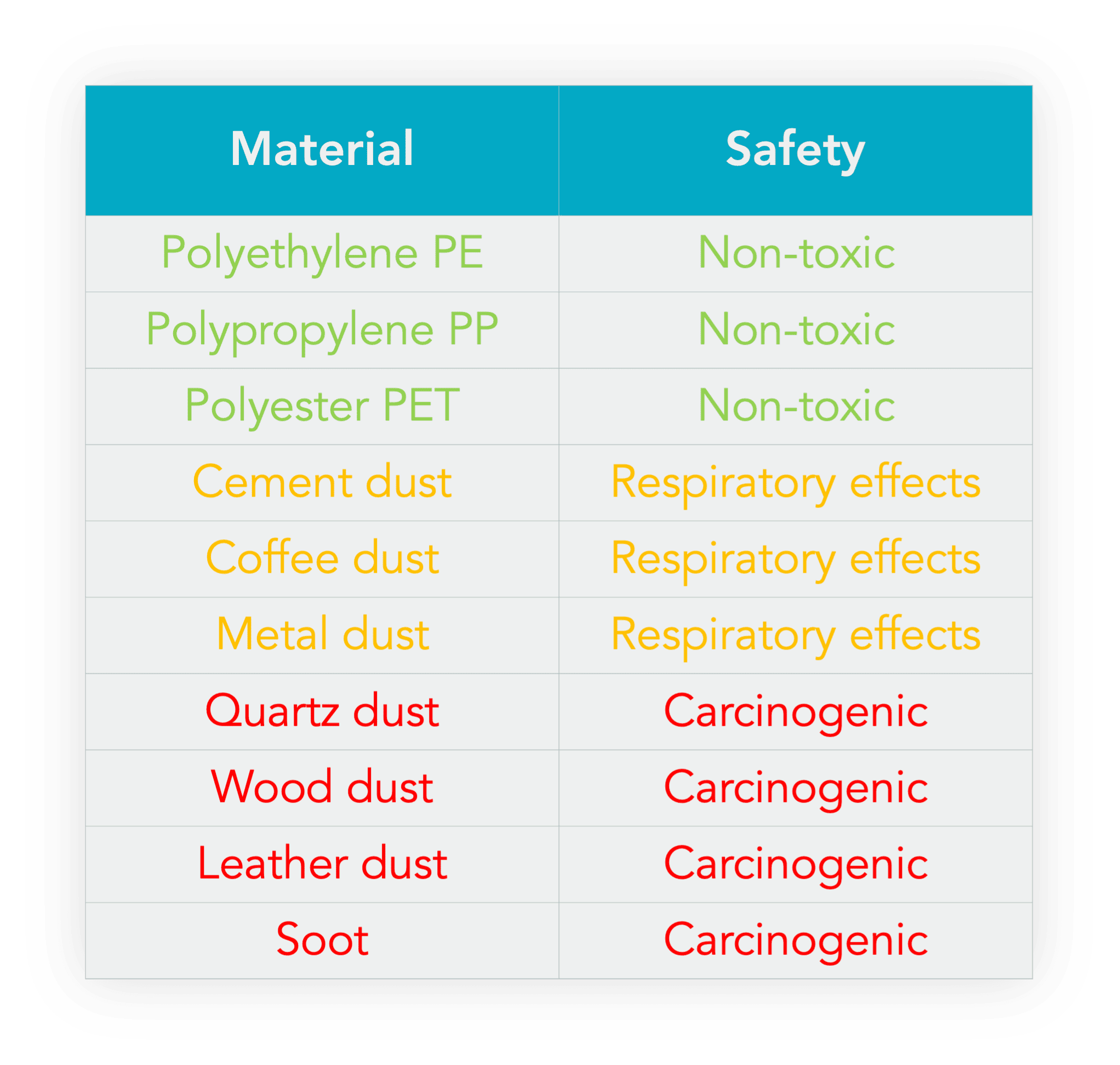
When comparing the scientific findings on plastics to other particles we are exposed to, we find that the standard plastics are non-toxic but many of the other particles are actually a proven hazard to human health. For example, PE and PP are shown to be safe and they make up just 0.03% of dust. In contrast, quartz is proven to cause cancer when breathed in and that makes up about 25% of dust. I know which one I am most worried about.
The WWF tells us that we eat a credit card’s worth of plastic per week whereas the latest independent scientific study says that they are wrong and that it actually takes over 20 000 years. The credit card per week sounds dramatic and assumedly leads to donations from an alarmed public – nevermind that it’s been proven untrue.
Once again, we have been intentionally misled into ignoring real and present dangers and instead focusing on plastics, which are known to be some of the safest materials. How were we so badly misled?

A scientific review found that when it comes to microplastics, 24% of scientific articles conclude there is harm but when the media report the science to us, 93% of the media articles say there is harm. Why do they do they choose to totally misrepresent the facts and mislead the public? Because bad news sells, so it is more profitable and less work for them to make sensational headlines than to do their job properly. Read more about microplastics exposure and risk on this dedicated page or, if you need more, then consider a keynote speech on microplastics from Dr. Chris DeArmitt.
How do Plastics Affect Wildlife and Marine Animals?
It is often claimed that plastics harm wildlife and marine animals in particular. Such claims made but no evidence is presented – instead we see an image as if that is all the proof that’s needed. But we all know how easy it is these days to edit photographs.
The image on the left was posted on LinkedIn to show how damaging plastics are to marine wildlife. I commented that it was probably Photoshopped and to my surprise, a LinkedIn user went away and checked. They posted the original stock image from Adobe which contains no plastic bag (on the right). The bags had indeed been edited to mislead the public and unjustly demonize plastic.
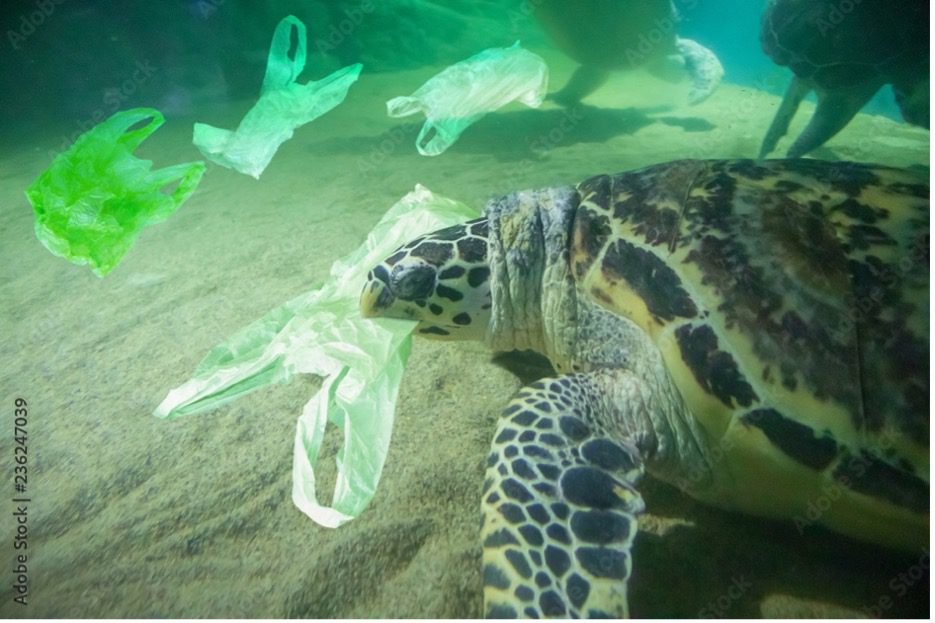

Who gains by lying and falsifying evidence? Look to see which groups make money from making us angry enough to donate to them and you will have your answer.
What about real evidence? What do scientists say about the effects of plastic on turtles, whales and birds? It turns out that huge studies have been done to see what threats there are to turtles, birds and whales. The scientists listed tens of thousands of data points showing the causes of death for each type of animal. The words “plastic” or “bag” or “straw” did not even appear in those studies because they are not a significant threat. What about the turtle with a plastic straw up its nose? It turns out there’s no evidence for that either. The object didn’t look like a straw, it was never analyzed to see what it was made of and when I emailed them, they said they were not at all sure it was a straw at all. Read more about the fake story about the sea turtle with a plastic straw up its nose here. Does any of these matter if there will be more plastic than fish in the ocean by 2050? It turns out that the more plastic than fish claim is false as well and has been debunked again and again – see here for more on that.
It would seem that we have been tricked into donating our money based on fiction. How can we be sure that is really the case? Simple – Dr. Patrick Moore, the former President of Greenpeace wrote a report saying that they abandoned science and evidence and are now just trying to get donations by peddling fiction.
Google or download “Greenpeace Wants a Piece of Your Green” to see that report. Also, read his book “Confessions of a Greenpeace Dropout” in which he describes how he left in disgust when they changed from being pro-environment to pro-fiction. He is not alone – other former environmental group members have also exposed the shady dealings of their former organizations.
This is why we cannot trust our so-called “environmental groups” and must instead rely on solid independent and scientific peer-reviewed evidence. If you care about our future and our children’s future, then visit plasticsparadox.com where the book is a free download, or if you want a short summary, then watch the YouTube video The Great Plastics Distraction video below.
Conclusions about Plastics & the Environment
The impression we get from our exposure to internet sources is that plastics are public enemy number one. It is easy to go along with the online narrative, even though most of us realize that online information is untrustworthy. After all, who really has time to go check all the facts we’re told? Who has the scientific training to understand the peer-reviewed works?
Fortunately, an independent scientist has now checked the facts. I spent thousands of hours unpaid to read over 4000 scientific articles. The most comprehensive review of the science ever done reveals that most of what we believe now is simply fiction. Thousands of peer-reviewed scientific publications disprove what we and our politicians believe today. The science contradicts what teachers are telling our children in school. In December 2022 Judith Enck, President of Beyond Plastics, testified for Congress – you can see my fact-check of that testimony here. In April 2023, Beyond Plastics released a report attacking PVC pipe and recommending that Congress spend their $15BN lead pipe budget on copper pipes. Here is the Phantom Plastics drinking water pipe report investigating what they said and showing how it is not at all credible. And for a detailed report on the toxicity of drinking water from copper pipes visit iscoppersafe.com.
It turns out that the demonization of plastics is unwarranted and distracts the public from the real issues. Not only that, but policies based on this misinformation are proven to increase harm, not decrease it. Even if we banned plastics tomorrow, nothing would be gained. In fact, that would increase material use, increase waste creation, increase CO2 and increase fossil fuel use. Plus of course, without plastics we would have no electricity in our homes, no computers, no cell phones, no internet, no cars, no airplanes and no access to good medical equipment.
More information can be found free of charge at plasticsparadox.com where you can see hundreds of citations to the peer-reviewed science that back up all the statements made. I have not cluttered this article with all of the scientific citations because they are all on the website and in the video for those people who want a better future based on a foundation of hard data. Chris DeArmitt PhD is a popular keynote speaker dispelling all the myths about plastics and the environment and amazing audiences around the world.
Plastics are ~0.5% of materials we use
Plastics are ~0.5% of waste we create
Plastics replacement means 3-4x more material and waste
Plastic production accounts for just ~2% of CO2
Plastics are usually the greenest option according to LCA
Plastics degrade more rapidly than most other materials
There is no credible evidence that microplastics are a threat
Saving the planet takes real work and it can’t be done based on lies and misinformation. We have the easy option of demonizing plastic which is trendy but proven to increase harm or the harder, virtuous option of acting on the science to pave the way for a brighter future. Remember…
“you can be for the environment, or against plastics, but not both”.
Some reviews for the Plastics Paradox…
“…the most important tome on plastic sustainability of our lifetime! A masterpiece and important book for all to read.”
“Pure Accuracy from a Real Expert!”
“…cites studies, scientific articles and research to dispel truly dangerous misinformation that we have all been force-fed for decades.”
“An excellent book that everyone should read.”
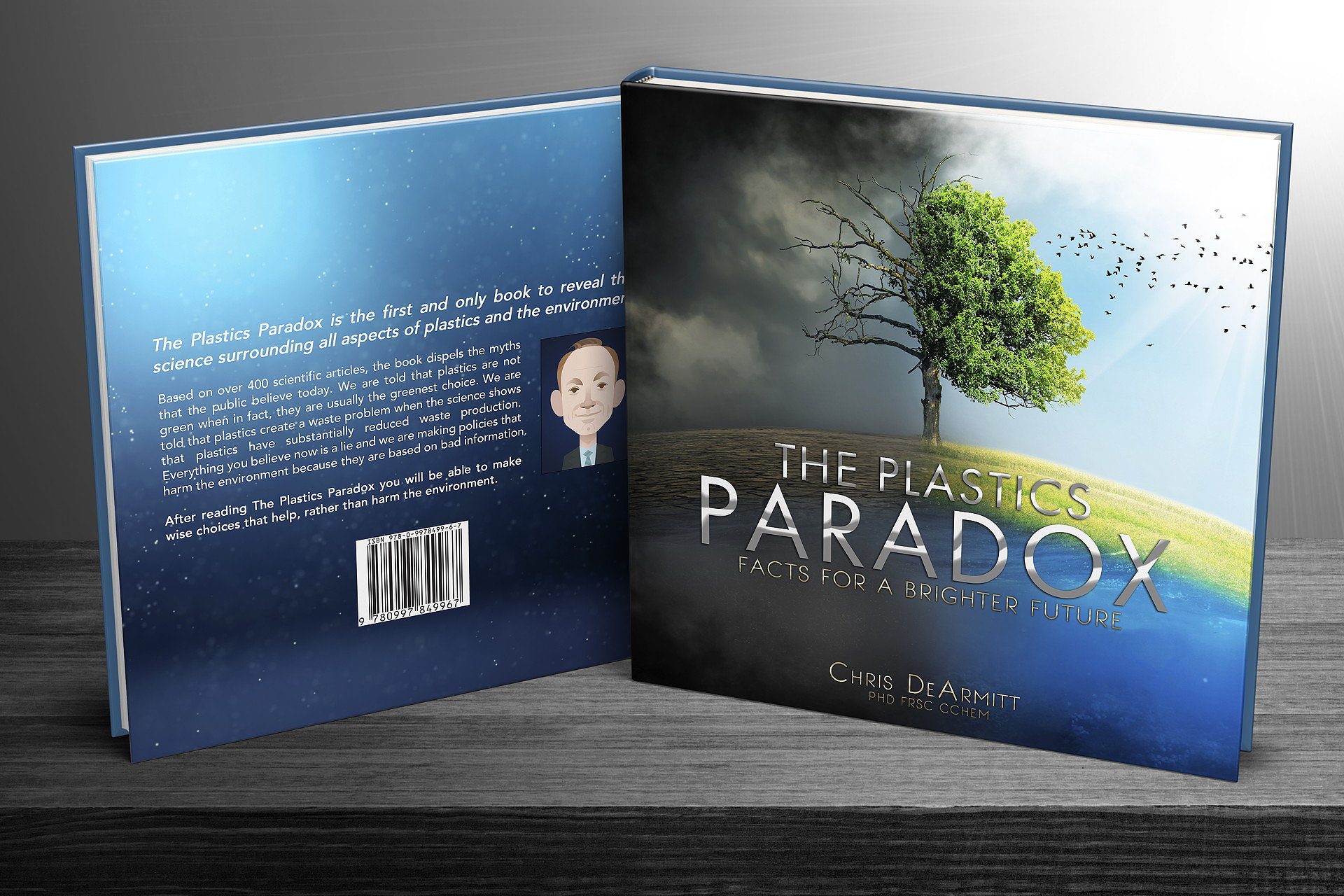
Dr. Chris DeArmitt is a renowned independent scientist with decades of experience solving tough technical challenges for some of the world’s leading companies. He is a Fellow of the Royal Society of Chemistry and Fellow of the Institute of Materials, Minerals and Mining. He is also a Chartered Chemist with a long list of publications, presentations and patents to his name. His review of over 4000 studies around plastics and the environment was performed unpaid to preserve impartiality. He then shared the findings for free via The Plastics Paradox book, websites, podcasts, radio and television. After some years, Dr. DeArmitt is now considered perhaps the leading expert on plastics and the environment and is a keynote speaker educating audiences globally.
Income 2024 : ~ 60% NAICS 424690 Chemicals, ~30% NAICS 423990 Durable Goods, 10% NAICS 541110 Legal, 0% NAICS 325211 Plastics Composition varies over time















